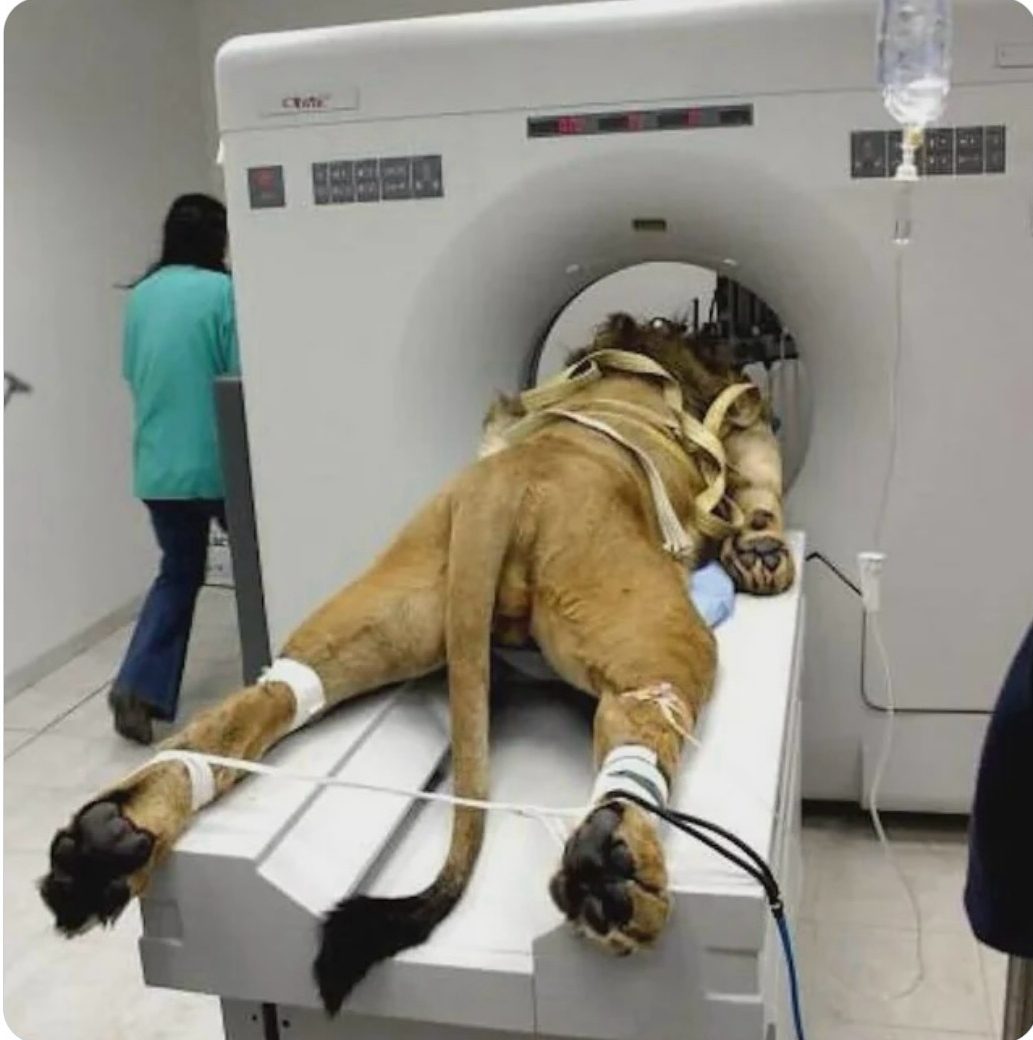Imagine If That Lion Wakes Up: The Fascinating Story of How Animals Receive CT Scans
When you think of CT scans, you probably picture a human patient—maybe someone in a hospital gown, lying perfectly still as a giant white machine hums around them. But what you might not realize is that animals, from house cats to lions, sometimes need CT scans too. And seeing a full-grown lion, sedated and stretched out on a scanner table, is both incredible and a little terrifying.
The photo making rounds online shows just that: a lion in a hospital-like setting, strapped carefully with monitors and IV lines, being guided into a CT scanner. At first glance, it looks almost surreal. But the truth is, this isn’t some quirky stunt. It’s a powerful example of how far veterinary medicine has come, and just how seriously experts take the health of even the most fearsome creatures on the planet.
Still, you can’t help but wonder—what if the lion woke up mid-scan? That thought alone sends a shiver down the spine, and it’s exactly why this kind of procedure is carried out with extreme caution and preparation.
Why Would a Lion Need a CT Scan?
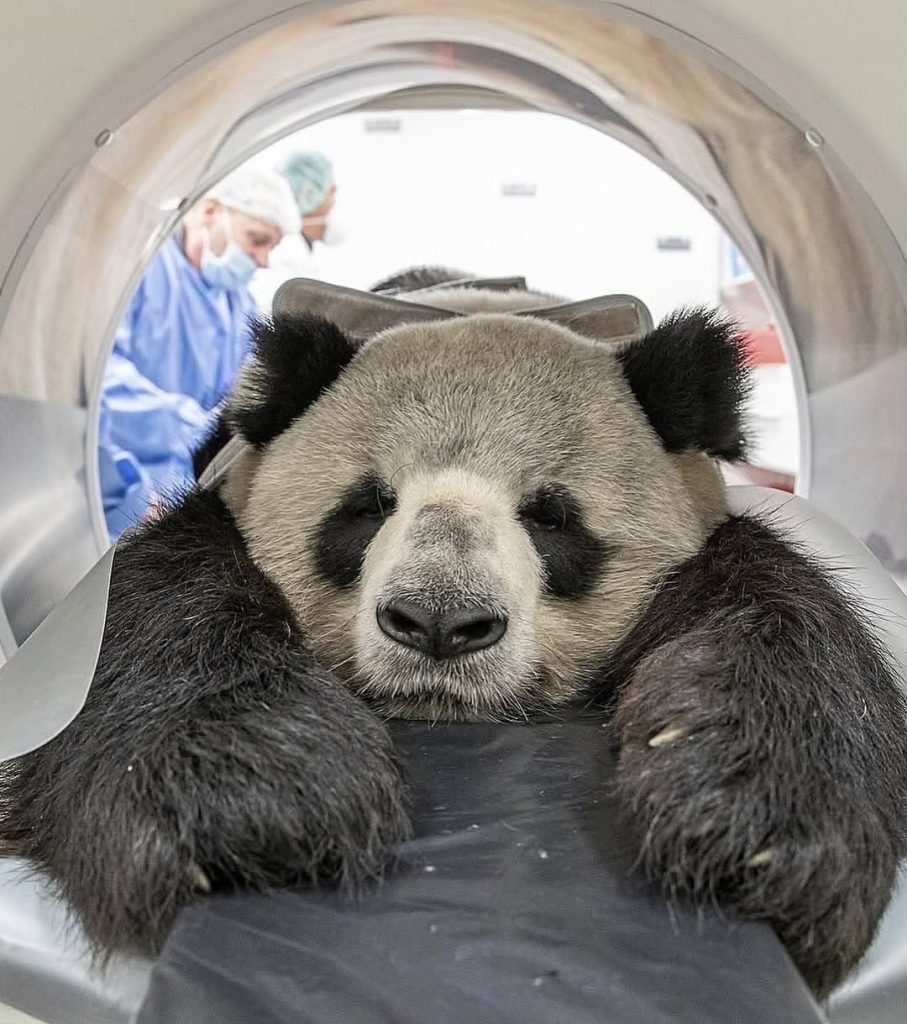
Just like humans, animals face medical problems that can’t be diagnosed with a quick check-up. A CT scan, or computed tomography scan, uses advanced imaging technology to create detailed pictures of bones, muscles, organs, and tissues. It can reveal tumors, internal bleeding, fractures, infections, and countless other hidden issues.
For a lion, this could be the difference between life and death. Zoo veterinarians and wildlife doctors often rely on CT scans to diagnose conditions that would otherwise remain invisible. For example, an older lion showing signs of weakness might have cancer that only a scan could reveal. A younger lion with head trauma might need a CT to see if there’s bleeding in the brain. These machines, typically used for humans, become life-saving tools for animals when adapted properly.
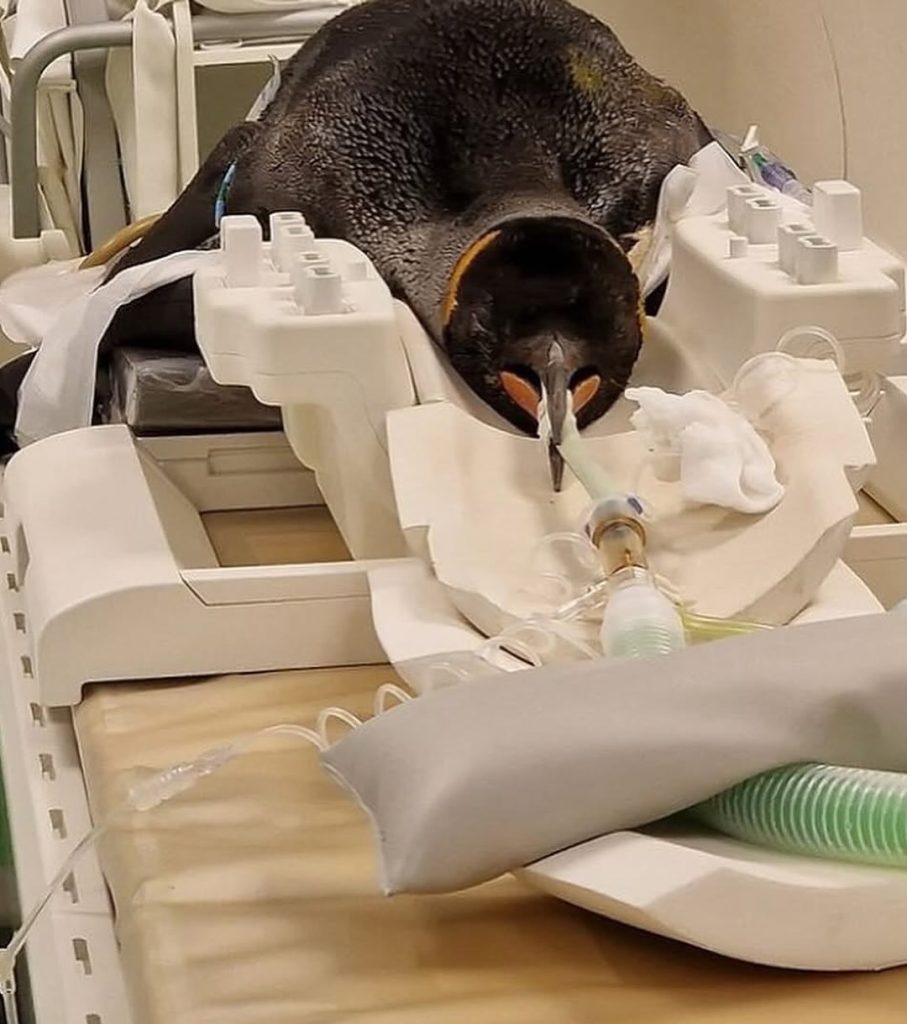
Now, let’s pause for a second. Imagine the sheer logistics of getting a 400-pound lion onto a CT scanner. These machines weren’t designed with wild animals in mind. That means the veterinary team has to work carefully, using custom restraints, wide tables, and heavy sedation to make it possible.
The process usually begins with a tranquilizer dart. The lion is monitored closely as it falls asleep—its breathing, heart rate, and muscle tone checked constantly to ensure safety. Once fully sedated, the team moves quickly. With ropes, stretchers, and sometimes even forklifts, they lift the massive animal onto the table.
Seeing a lion in such a vulnerable state is surreal. These are apex predators, built for power and dominance, yet in that moment, they’re as fragile as any patient in need of medical care.
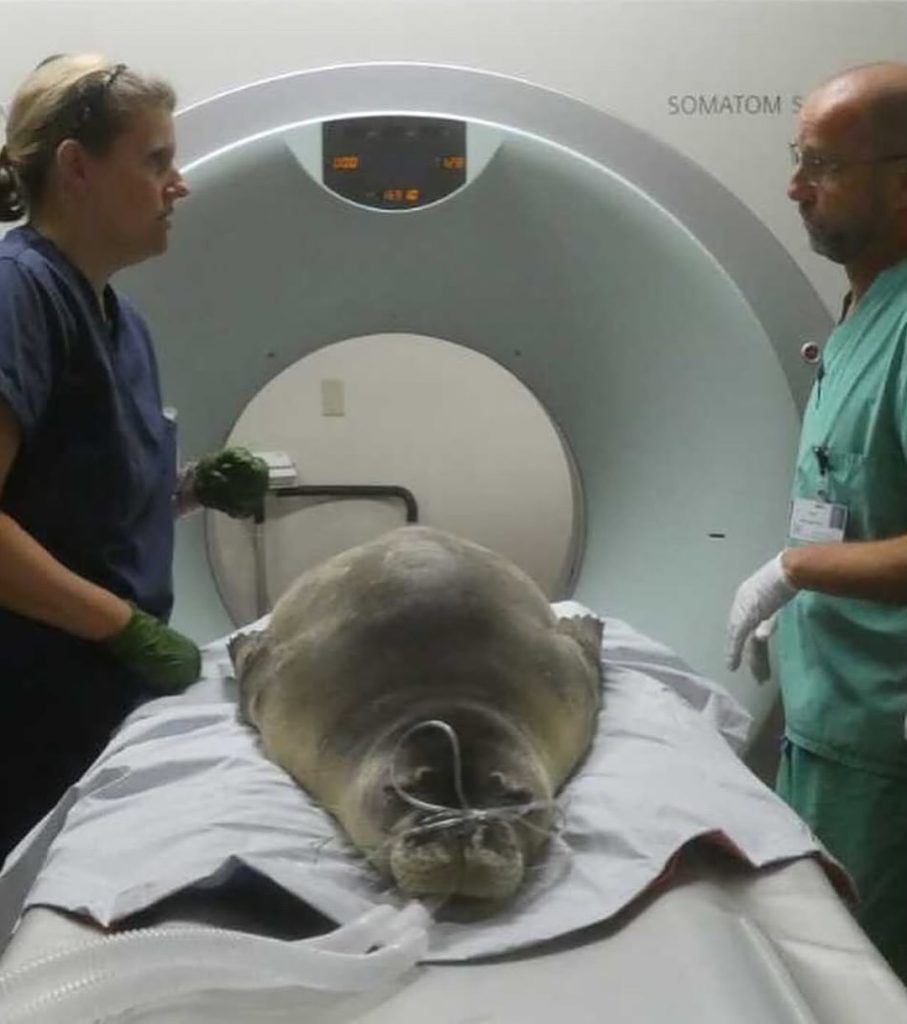
Here’s where the imagination takes over. If you’ve ever been inside a CT room, you know how quiet it usually is. Now, picture that same silence—but instead of a human patient, there’s a lion lying motionless inside the machine. The thought that it could wake up suddenly is enough to make anyone’s heart race.
Of course, the veterinary teams are professionals. They use precise doses of anesthesia and maintain IV lines to keep the animal sedated for the duration of the procedure. There’s always a team standing by with emergency medications and monitoring equipment. But still, the risk exists. If a lion were to wake up, disoriented, surrounded by machines and people, the situation could quickly turn dangerous.
That “what if” scenario is a reminder of the delicate balance between human innovation and raw animal power. It’s also what makes the sight of a lion in a CT scanner so captivating—we see the meeting point of modern medicine and the wild.
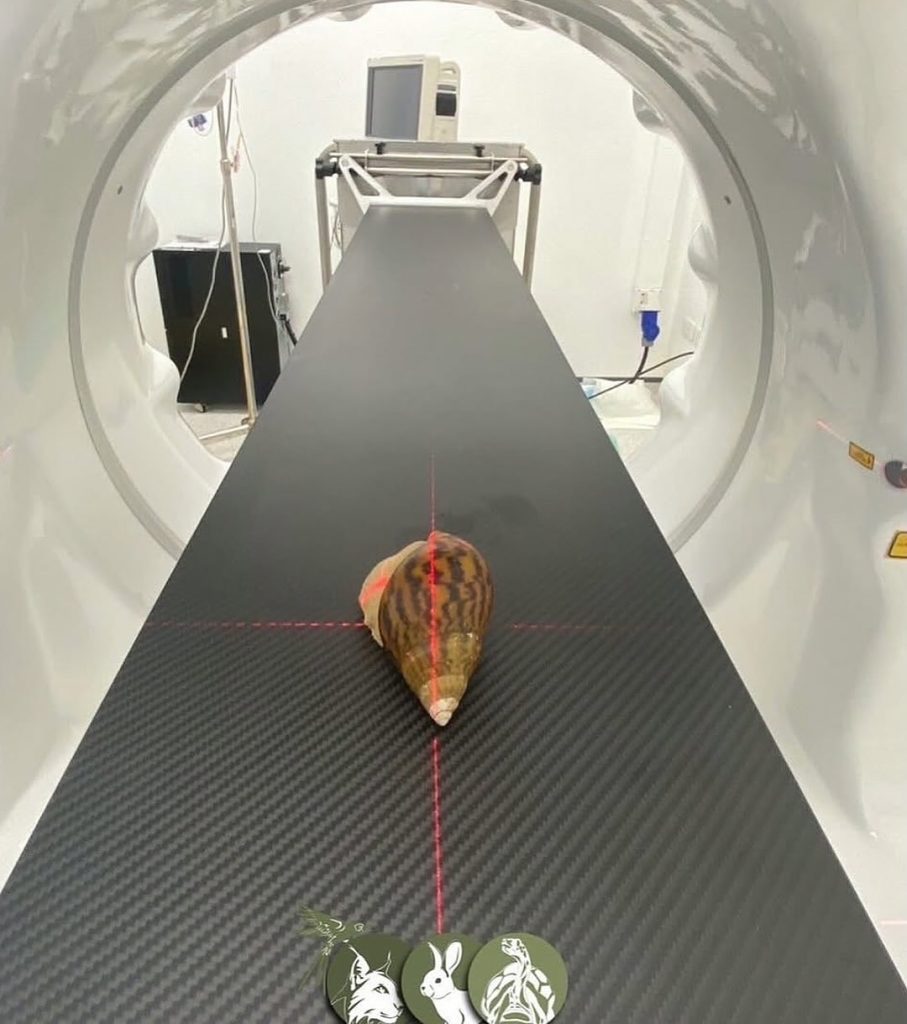
The results of these scans are nothing short of incredible. For lions, veterinarians have diagnosed brain tumors, discovered hidden fractures, and even monitored dental health through CT imaging. These insights allow treatment plans that wouldn’t have been possible a few decades ago.
In one famous case, a lioness at a European zoo underwent a CT scan that revealed a severe sinus infection. The discovery allowed vets to perform surgery that saved her life. In another, scans detected bone cancer in an aging lion, leading to a decision that gave the animal a more comfortable final stage of life.
These moments remind us that while lions are kings of the wild, they are also living beings vulnerable to illness, deserving of care and compassion.
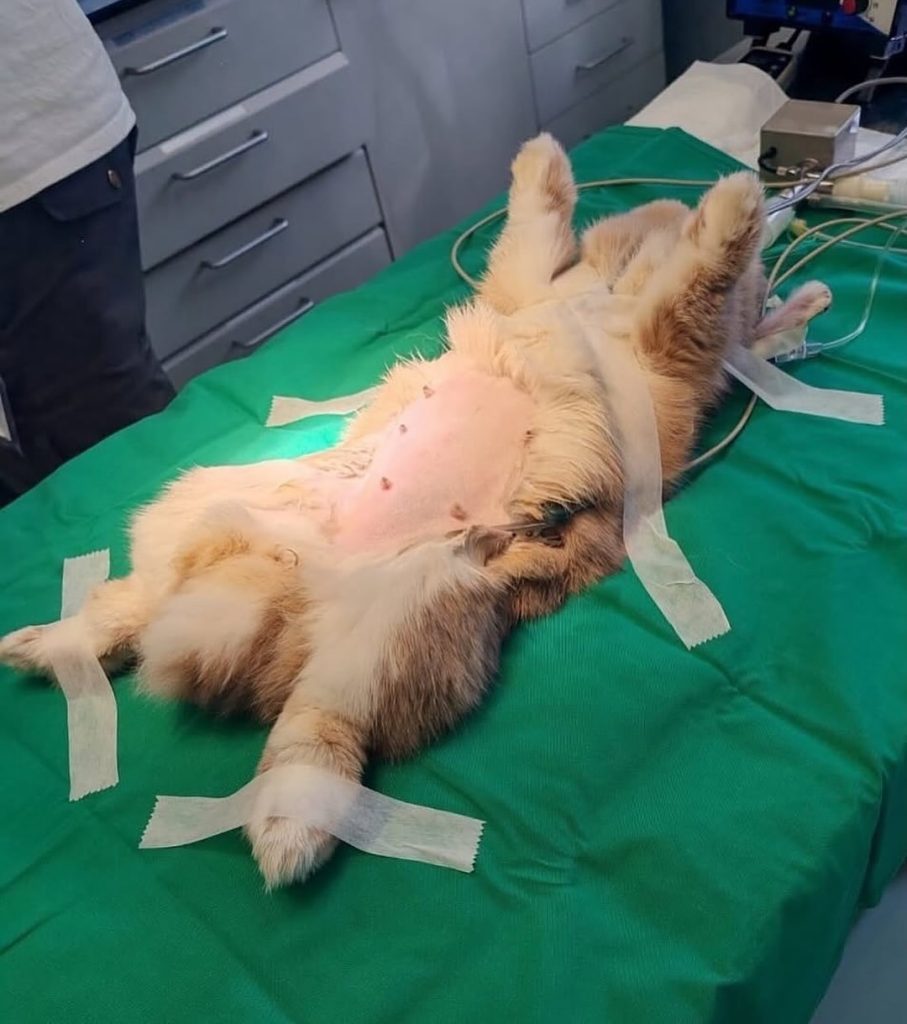
CT scans for animals highlight the lengths humans go to protect and care for wildlife. Zoos and sanctuaries now invest heavily in veterinary technology, often adapting human equipment for animal use. It’s not unusual for a hospital or research center to partner with a zoo, bringing animals into facilities where they share the same machines as human patients.
Think about that for a second. A machine that scanned a person with a back injury on Monday could be scanning a lion with a brain problem on Tuesday. It’s a fascinating crossover that shows how medicine unites species under the same umbrella of care
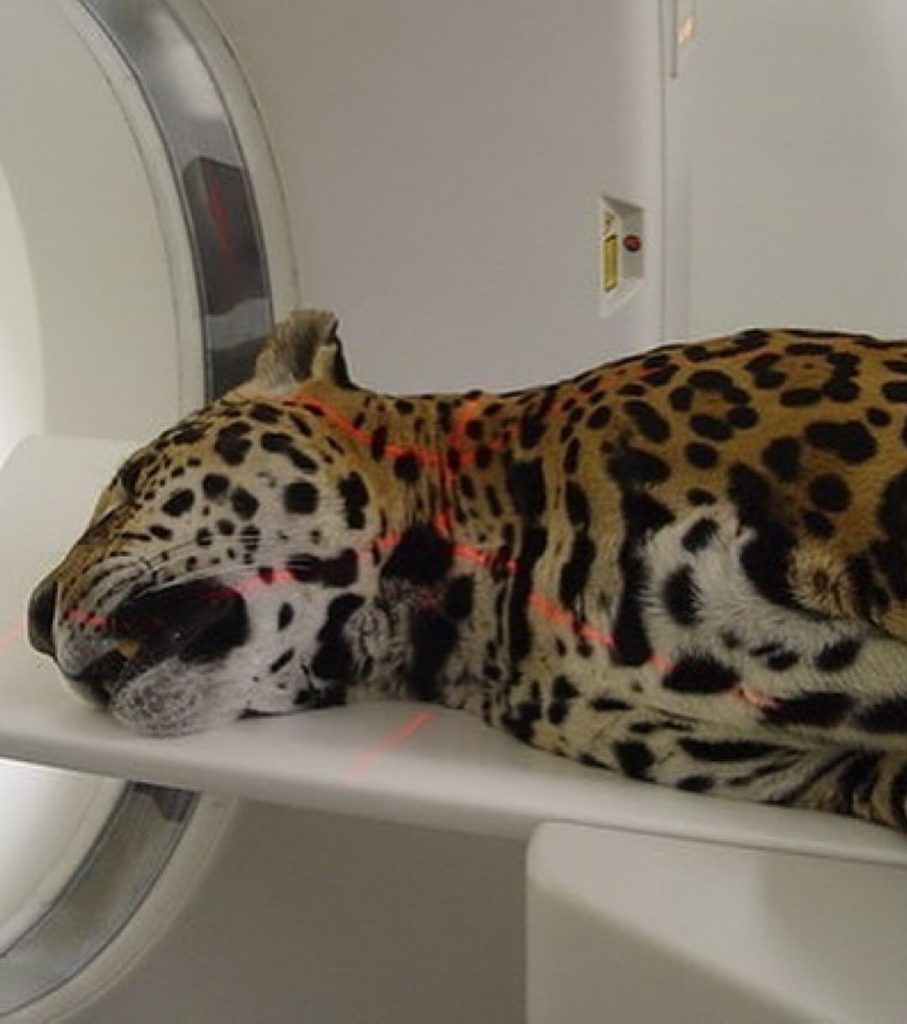
When most of us picture a lion, we think of raw strength—manes blowing in the wind, paws pounding the earth, roars echoing across the savanna. Seeing one strapped to a CT table, unconscious and vulnerable, flips that image on its head. It tugs at something deeply human.
There’s awe, because we’re witnessing science at its best. There’s empathy, because we see the lion not just as a predator, but as a patient. And there’s a little fear too—the thought that if the sedation wore off, chaos could unfold in an instant. That cocktail of emotions is what makes these images go viral—they stir curiosity, respect, and a touch of nervous laughter all at once.
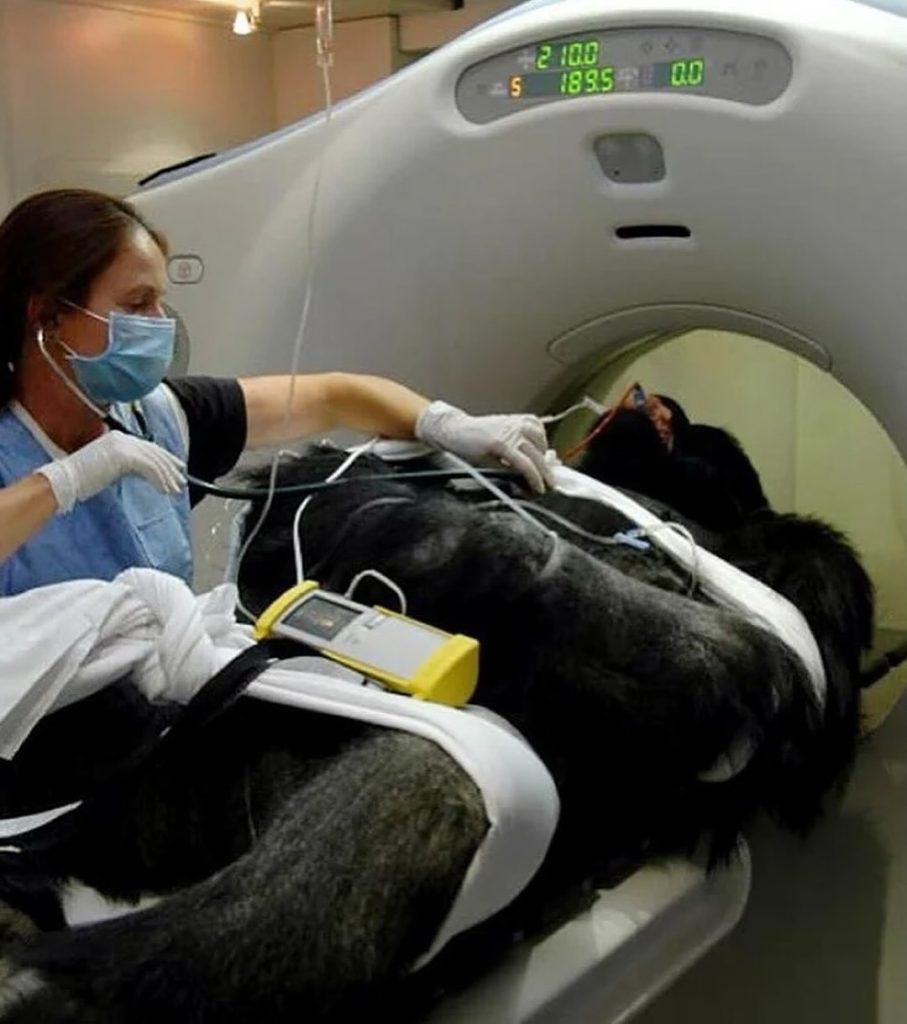
Beyond the viral moment, the sight of a lion getting a CT scan teaches us something profound about our relationship with animals. It shows the lengths we will go to understand and protect them, even when they’re strong enough to overpower us. It shows that medicine is not just a human privilege but a universal tool for life. And it reminds us that, despite all our technology, there’s always an element of humility when dealing with nature’s greatest creatures.
In many ways, that’s the most powerful takeaway. Science and compassion walk hand in hand, even when the patient has claws sharper than scalpels.
Final Thoughts
The image of a lion in a CT scanner might look strange, even humorous at first glance. But behind it lies a story of modern veterinary medicine, human ingenuity, and deep respect for the lives of animals. It’s a reminder that even the fiercest creatures sometimes need our help—and that we have the tools to provide it.
The next time you see an image like this, don’t just laugh at the absurdity. Think about the doctors, vets, and staff who make it possible. Think about the lion, carried gently onto a machine built for humans, receiving care that might save its life. And yes, allow yourself a moment to wonder—what if that lion wakes up? Because sometimes, the questions that scare us a little are the ones that make us appreciate the miracle of life even more.

Daniel Reed is a curious mind with a passion for breaking down how the world works. With a background in mechanical engineering and digital media, he turns complex ideas into easy-to-understand articles that entertain and inform. From vintage tools and modern tech to viral internet debates and life hacks, Daniel is always on the hunt for the “why” behind the everyday. His goal is simple: make learning feel like scrolling through your favorite feed — addictive, surprising, and fun.
